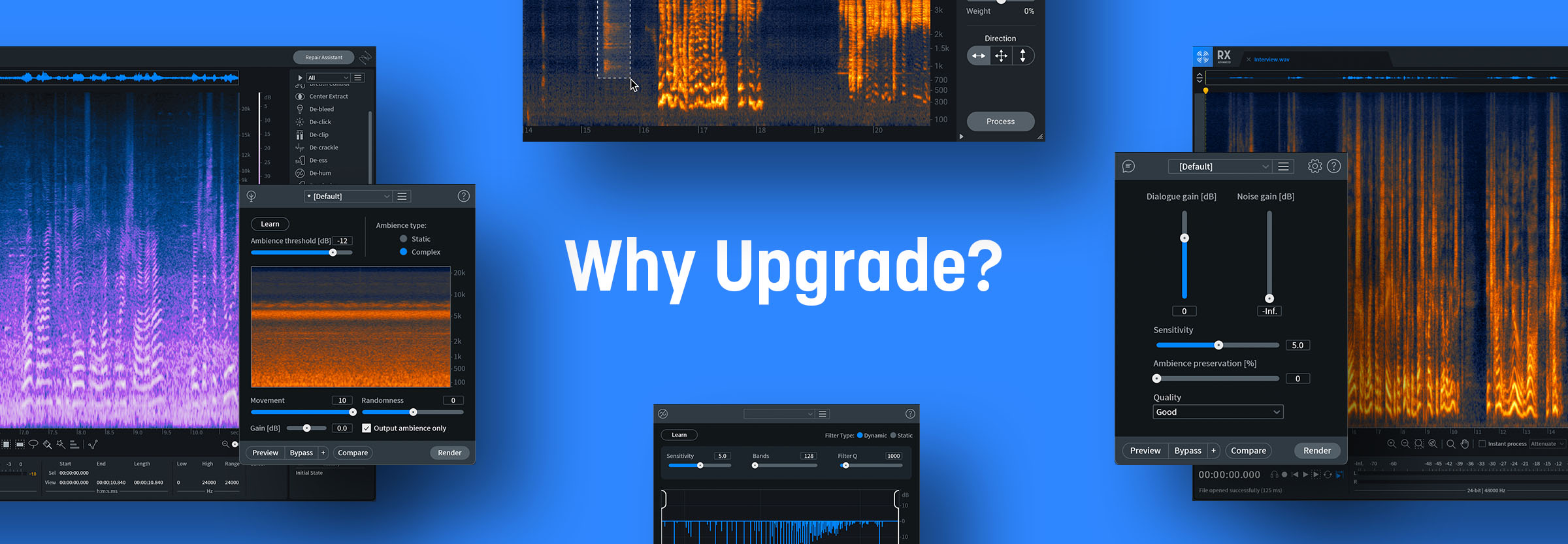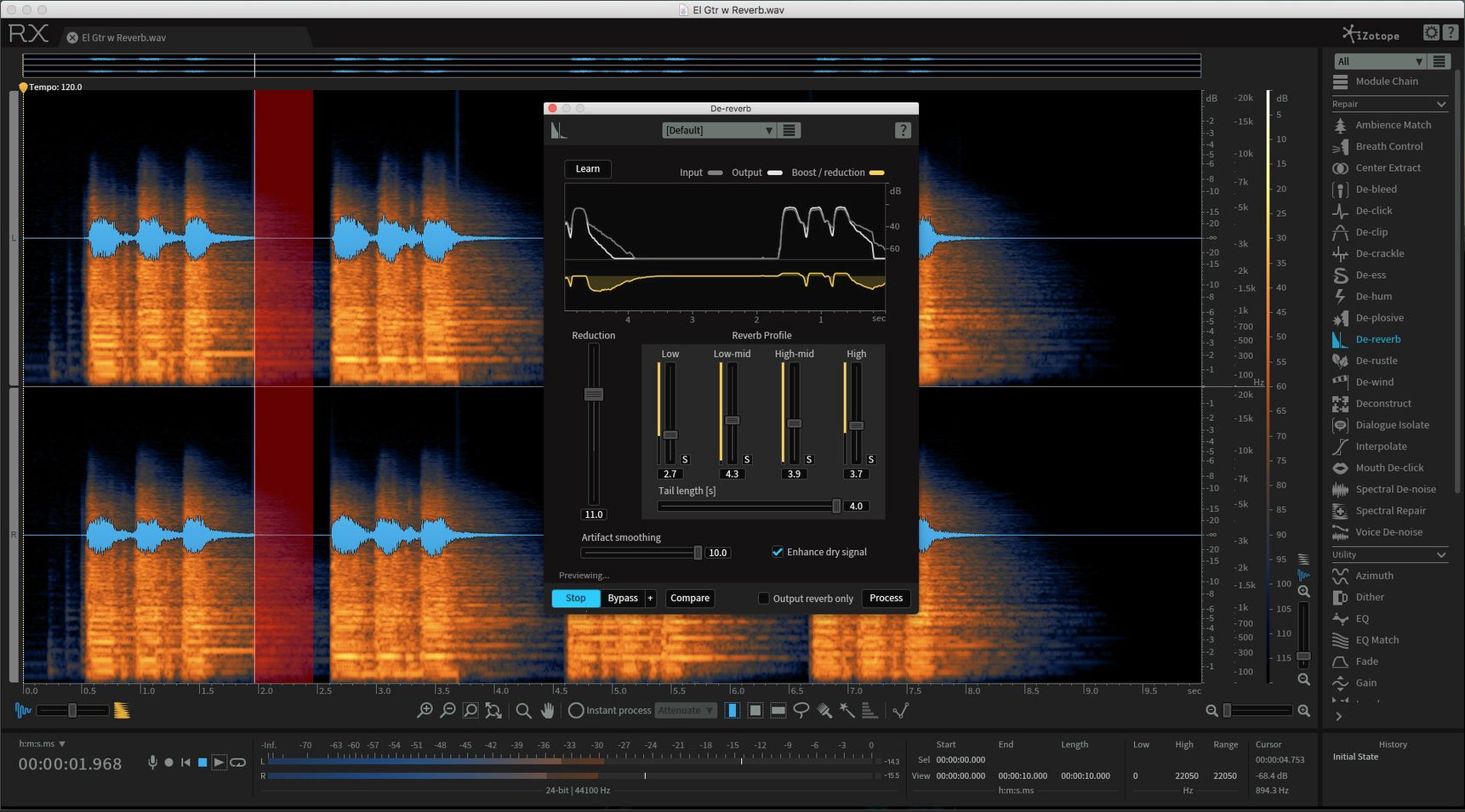
Raise the Reduction value until you hear the noise begin to disappear.Play a few seconds of audio for the plug-in to initialize the noise reduction curve.This is designed to dynamically adjust the individual threshold nodes across the frequency spectrum throughout the program to accommodate any changes in the noise profile. If the noise changes throughout the program: In some cases you may want to insert an EQ plug-in ahead of the Dialogue De-noise plug-in to filter low frequency rumble and make any other broad EQ adjustments. Insert the iZotope RX Dialogue De-noise plug-in on the dialogue track or bus that requires noise reduction.Once you have arrived at the optimal setting for your audio, click Process.Click Preview and adjust settings to the program material, starting with the Reduction slider and then adjusting multiband threshold nodes if necessary.

These nodes represent different parts of the frequency spectrum, and their thresholds can be adjusted (and automated) individually.

Since this example has steady background noise throughout, we’ll start in Manual mode. Inside the Dialogue tab, we can set the De-noise algorithm to adjust automatically (which is used for sounds that vary throughout the program), or we can manually learn a noise profile that the algorithm can reduce constantly across the program.We’ll use Dialogue mode for this example. The De-noise module has two modes: Dialogue and Spectral. In this example, we also reduced some of the prominent ‘S’ frequencies around 7 kHz and a tonal component of the background noise around 800 Hz.



 0 kommentar(er)
0 kommentar(er)
